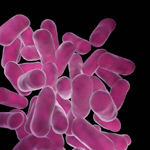Team:IIT Madras/Project
From 2010.igem.org

Contents |
Project Motivation
| On average, the world loses 2 people to cardiovascular complications every minute; Diabetes claims 4 times that number making it the 6th most common cause of death worldwide. India alone contributes 1 in every 25 of the diabetes cases every year. The World Health Organisation recently reported that up to 245 million people suffer from diabetes worldwide. It is estimated that diabetes consumes between 5 to 10% of the world's health care expenditure, and this is expected to go up to 12% in the next 20 years. There is, however, no known cure to this epidemic, and our only hope is to fall back to the old adage, 'Prevention is better than cure'. It has been known for a while that reducing the calories consumed in the form of sugar will help in the prevention of this disease, and is an essential part of living-with the disease. To date, seven different sweetening proteins have been identified and approved for consumption by the FDA. However, these proteins face several issues in production, separation and purification, making them an ideal candidate for further work, particularly focusing on expression and regulation. |
| We aim to use synthetic biology to engineer pro-biotic lactic acid bacteria used in the production of dairy products like yogurt, buttermilk and curds, to produce Monellin, a heat and pH stable sweetening protein. If we are successful in engineering Lactococcus lactis, a Gram positive bacteria to express and secrete Monellin, we will be able to produce dairy products low in poly-saccharide-based sweeteners, radically reducing the calorific content of these products. In order to be able to control the level of expression in this system, we plan to develop a regulatory system(s) that can be tweaked to suit varied purposes. |
Project Abstract
Ideation
Project Details
Part Design
PCR Products
Proof of Concept
Final design
The Experiments
Part 3
Results
 "
"